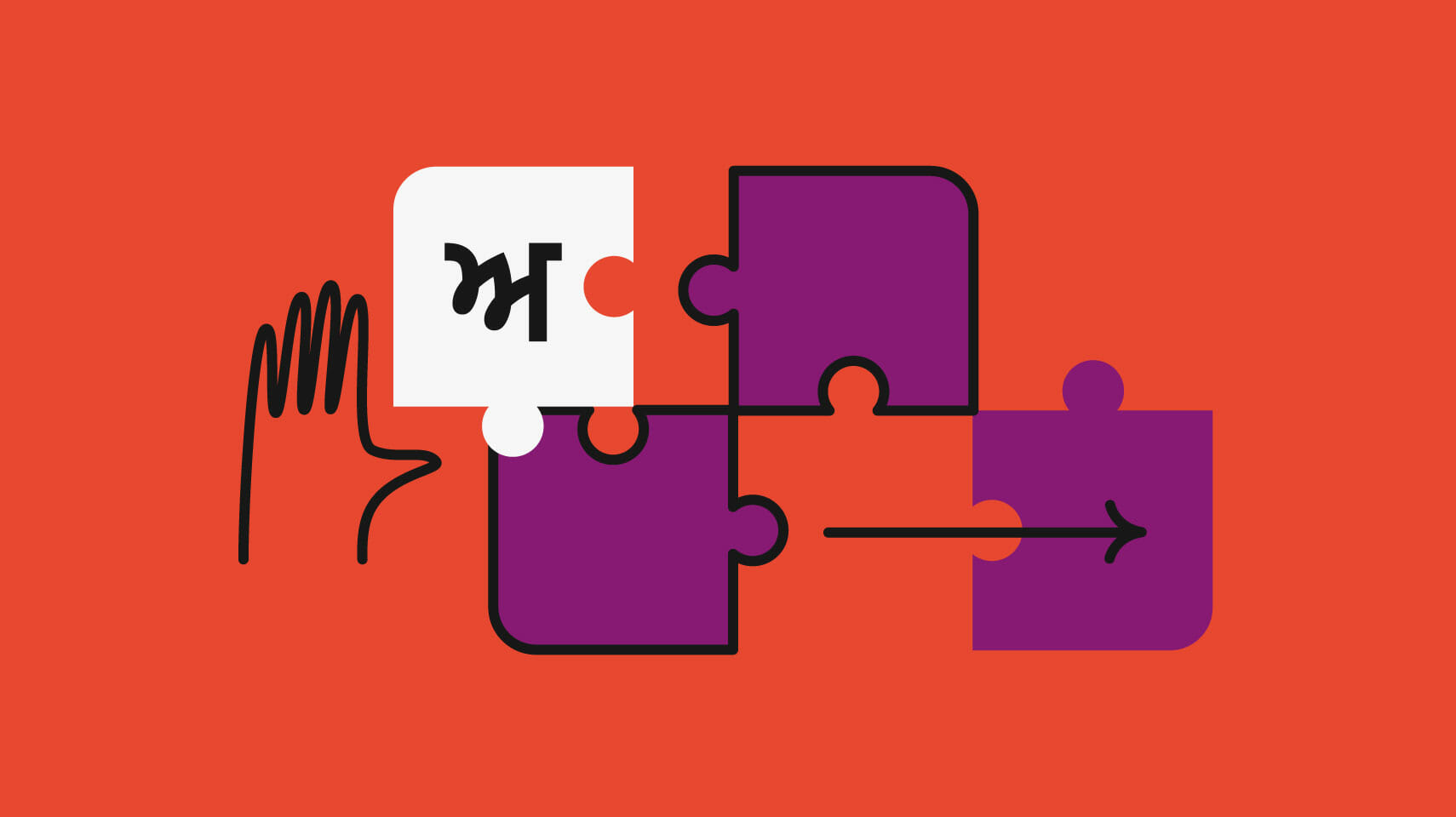Machine translation
Staying Creative in the Age of AI: A Translator’s Guide

Research suggests a connection between human-machine interaction and cognitive processes. In their conference paper on translation technology and cognitive abilities, Maureen Ehrensberger-Dow and Gary Massey describe how reliance on technology has changed the translation process as “language technology tools have effectively extended translators’ memory by externalizing it…”
With previous solutions to translation and terminology problems only a few keystrokes away, translators are experiencing a vast increase in productivity. However, they might not exercise their memory and creativity as much: In his paper about possible impacts of internet use on cognition, Dr. Joseph Firth remarks that having “most of the world’s factual information literally at our fingertips’ could well begin to change the way in which information is stored in the human brain.”
Considering that memory is seen as the source of creativity, it’s not surprising that some translators are concerned about the latter. Especially now that increasingly usable raw machine translation (MT) output is added to their resources, they might even question the future role of creativity in the profession.
However, MT is not suitable for very complex, creative, or culturally specific content. In these areas, a human translator’s creativity is still very much in demand. Even during a machine translation post-editing (MTPE) task, depending on the source text and the client’s quality expectations, some segments may have to be re-translated in a more creative fashion. The following tips and exercises can help translators and post-editors keep the creativity flowing as they leverage the benefits of technology.
How to unlock creativity during the translation process
Sometimes you can feel stuck during a translation task. You might be struggling to convey the information as elegantly as the source text. You might feel like you can’t hit the right tone or maybe you’re just struggling to find the right words. The clock is ticking and you’re lacking ideas on how to fix things. To put it simply, you’ve got a bad case of translator’s block. Don’t worry, these tips are here to help you overcome it.
Split segments in your CAT tool to get a new perspective
Maureen Ehrensberger-Dow and Gary Massey’s paper notes that the segmentation of text in a computer-assisted translation tool “may unintentionally constrain creativity and the freedom to move away from source-text syntactic patterns.” Thankfully, many CAT tools allow translators to split or join segments. Once you have lifted the limit of how information is divided between segments, you may be able to find a much more fluent solution.
Paraphrase the source text for yourself
Sometimes a source sentence is crystal clear to you, but grammatical constraints in your target language make it impossible to translate the concept in the same way. As the deadline approaches, you struggle to see how a native speaker of your target language would express the same fact. In this case, it may help to paraphrase the source sentence for yourself before you translate it into the target language. This can also be done to get around known problems with MT engines when preparing texts for machine translation.
Consider how someone you know would say it
If you’re unsure whether your translation hits the right tone, picture your client’s target reader. Then think of someone you know who is like that person. Depending on the situation, this might be someone you often see on TV or even someone you follow on social media. How do they talk or write? Would they say it like this? Imitate that person, or try to impress them. This trick is most effective when you close your eyes, imagine yourself in a situation where you would normally see that person, and really concentrate on their voice and body language.
Use thesauri in source and target language
Are you struggling with one particular source word because it feels like you can’t render its exact meaning in the target language in the given context, and a dictionary doesn’t help? Then look the standard translation(s) of said source word up in your target language thesaurus. Among the synonyms, you’ll often find one that hits the nail on the head. Alternatively, try to find synonyms of the source word and then look for translations. This might just yield the word you’re looking for.
Actively memorize those tricky translations
Once you’ve solved a particularly challenging translation problem, make a note of the solution. While it’s tempting to rely on your translation memory (TM) and term base (TB) for this, bear in mind that creativity is based on what you know. So, write your newfound translations of tricky expressions down, for example on index cards. Memorize them so you could spill them out when prompted—without having any translation tech at hand. Integrate frequent practice in your busy lifestyle: when you’re waiting for the kettle to boil, the bath to run, or the bus to arrive.
How to boost creativity with (informal) continuous professional development
While the tips above can help to overcome acute translator’s block, it’s just as important to foster creativity outside of actual work situations. If you don’t already do this, you’ll be surprised how these two hacks can benefit your translation flow in the long run:
Use slow periods for writing exercises
Instead of scrolling through your social media feed for the umpteenth time, spend some time with your favorite hot drink, a pen, and paper. That’s right – research suggests that writing with pen and paper could boost creativity. Then, try the following exercises:
- Describe an everyday object in great detail. Experiment with different styles: flowery, technical, elaborate, colloquial, etc.
- Paraphrase a passage that someone else has written in a different tone and style. For example, make something elaborate more colloquial, or make a cheap-and-cheerful product description sound classy.
Get inspired by great original content
Expanding your vocabulary and stylistic repertoire is like stocking up a toolbox for your creativity. Most translators will know that reading original content in their target language helps them pick up useful terms and expressions, and ultimately become more fluent writers themselves.
Unfortunately, this learning effect can backfire when the chosen texts are poorly written. Consider the example of low-quality translations: When repeatedly presented with the same error or calque, most people will cringe a little less each time, and the error will eventually make its way into their vocabulary.
Therefore, be mindful of the content you read in your (semi) free time. Pick texts with a wide vocabulary, consciously appreciate different styles, and think about what makes you connect with a piece of writing that you enjoy.
How to stay creative in a post-editing situation
Depending on the client’s quality expectations, the material, and the level of post-editing stipulated in the brief, some creativity may still be required for post-editing tasks. But when you’ve already confirmed a large number of machine-translated segments with minimal edits, it may be tricky to switch to a different mode for the few segments that do need more work. Moving away from the engine’s less-than-perfect translation can be a challenge as you’re already biased. Here’s how you can master it:
Anticipate potential issues before getting down to work
Especially if the brief stipulates full post-editing, it helps to identify passages that could require more work before getting stuck in the nitty-gritty of editing. A machine translation quality estimation (MTQE) tool will provide an approximation of the expected effort.
As you decide how little or how much editing is needed for each individual segment, it’s a good idea to fully grasp the source segment before checking the target—even though it’s tempting to work the other way. Once you have some experience with the MT engine used, it will become easier to identify problematic segments before actually looking at the target. If you’re new to post-editing, you could even try covering the target while reading the source.
Go beyond words to find the right ones
If you struggle to see past the source text and MT output wording but a close translation doesn’t cut it, it can be good to step away from words for a while. Firstly, think about the target reader, the subject, and the purpose of the text. If the text contains instructions, go through the motions in your head (or with your hands!) and then try to describe what you’re doing. If the text is about a product, picture how exactly it benefits the reader, how they are going to use it, and how they feel. Then try to talk about it in your target language. It may help to physically leave your desk while doing this, or even to take notes or draw a mind-map on a piece of paper.
That being said, spending too much time on creative re-translation could indicate that the text is not suitable for MT, or that your own quality expectations are too high for the task at hand. It may be time to revisit the brief, discuss recurring issues with the client, or try a different MT engine. Phrase Language AI, the machine translation add-on for Phrase TMS, our enterprise-grade translation management system, includes MT autoselect, which can automatically choose the most suitable engine out of the supported range, based on the language pair and the domain of the source text.
Unlock the power of machine translation
Discover advanced machine translation management features within our enterprise-ready TMS and create new business opportunities worldwide more quickly and efficiently.





